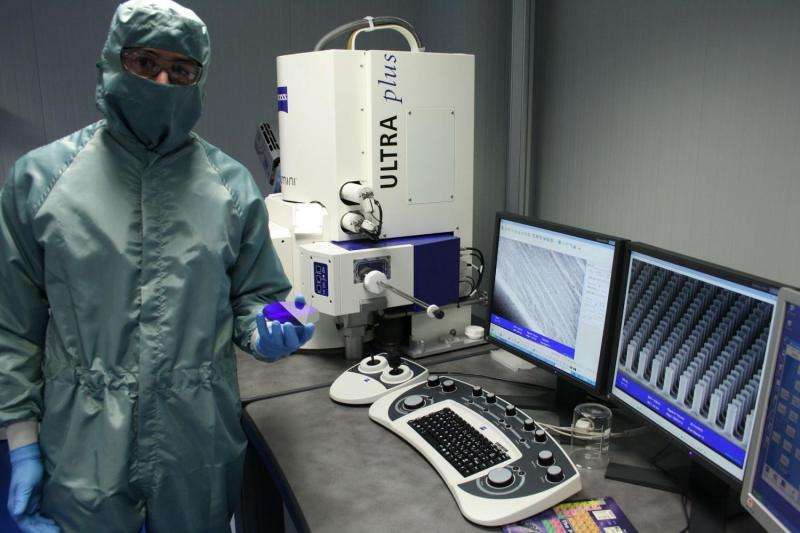Nanostructures used as biosensors allow diseases or allergens to be detected

The industrial engineer Iñaki Cornago-Santos has developed structures on a nanometric scale that can be used as biosensors for medical, food or environmental sectors to detect diseases, allergens or contaminants; or can be used to reduce the reflection of solar cells in order to increase their efficiency. This is what he says in his PhD thesis defended at the NUP/UPNA-Public University of Navarre.
"Over the years tremendous progress has been made in micro- and nano-fabrication techniques with the help of the industry of semi-conductor materials," explained Iñaki Cornago. "The aim of these advances is to be able to fabricate increasingly smaller components that are closer to each other in line with a trend known as miniaturization."
Within the techniques used in these micro- and nano-fabrication processes, in his PhD thesis Cornago made use of what is known as laser interference lithography, which consists of applying laser radiation to a photo-sensitive material to create structures on a nanometric scale. In this case, he used glass, gold and silicon, among other materials, to which he gave shapes such as lines, holes, pillars or cones.
The applications of these nanostructures can be clasified in two groups: anti-reflective surfaces and biosensors. "In the first case, they are used to create a medium that reduces the reflection caused when light hits a surface," said Cornago. "This mechanism can be used to minimize, for example, the undesired reflections that are produced in glasses, windows or car windows and also the reflection produced on solar panels, which can increase the efficiency of these photovoltaic cells."
Optical response to a biological reaction
As regards the second group of applications, nanostructures are used "to achieve a specific optical response that, together with a biological reaction, allows information to be obtained about the presence of a substance in a sample". The thesis, supervised by Rafael Rodríguez-Trías, lecturer in the NUP/UPNA's Department of Mechanical, Energy and Materials Engineering, and the PhD holder in Engineering Javier Bravo Larrea, presents "a range of biosensor types that can be used in sectors, such as food, to find allergens, for example, as in the case of gluten or nuts; in the biomedical sector to detect diseases in biological samples, such as blood or urine; or in the environmental sector to spot toxins or chemical contaminants in marine waters."
Provided by Elhuyar Fundazioa

















